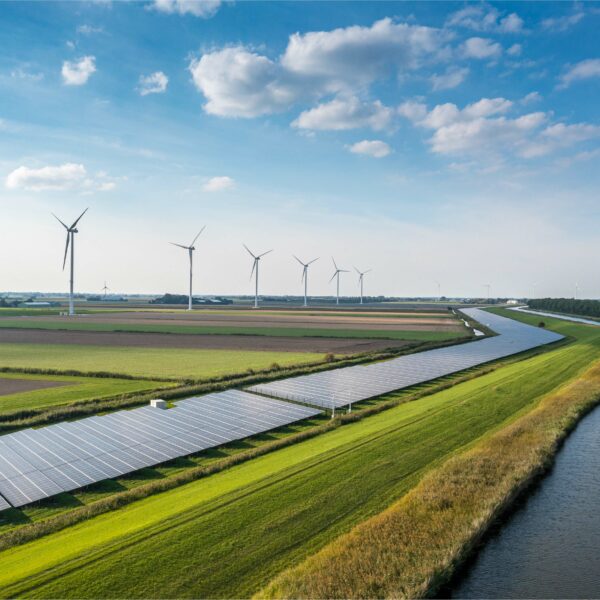Sustainable solutions for every goal.
Stakeholder demands for sustainability and decarbonization are driving the need for companies to meet emission reduction targets. However, many organizations often face inertia in getting started or if they have developed a roadmap, they face challenges maintaining that path. This often leads to companies implementing a piecemeal approach towards decarbonization, resulting in either overpaying for measures such as Carbon Offsets and Renewable Energy Certificates (RECs) or being stuck with a bad purchase (e.g., on-site solar with a cost prohibitive Power Purchase Agreement). You can avoid these situations through the development of a framework that evaluates all applicable measures across your portfolio and utilizing that to drive your decarbonization strategy.

Decarbonization
End-to-end service for all of your carbon reduction needs
OnSite Partners is a leader with national presence in the carbon emission reduction space, including renewable energy solutions, energy efficiency programs and electrification services to enhance your sustainability and decarbonization efforts, wherever you are on your journey.
Our energy experts work with you to develop a framework that fits your organization’s needs and objectives across your portfolio and delivers solutions and a strategy that prioritize options, for greatest impact. We specialize in a variety of services to help you get there, including:

GHG Inventory, Reporting & Management

Decarbonization Framework & Strategy Development

Technical & Financial Assessment & Valuation

Turnkey Execution on Capital, Ownership, Operation & Integration

End-to-end Program Development & Implementation

Integrated solutions for the best results.
We partner with you to assess a range of discrete options to form integrated solutions which results in an optimized approach for your decarbonization and sustainability goals. Our energy experts are here to guide you in the development and execution of the optimal renewable energy solutions, so you meet your goals successfully. Some of these solutions include:
Purchasing Carbon Offsets or Green-e® certified Renewable Energy Certificates (RECs) is one of the easiest ways to reduce Scope 1 and Scope 2 emissions. Purchasing RECs ensures that renewable energy is added to the electricity grid, and your business can claim the associated environmental attributes.
Energy conservation and efficiency measures help reduce both, Scope 1, and Scope 2 emissions. These projects also reduce operating costs and the need for procuring renewable energy certificates and offset needs. Some of the measures that you can implement are equipment upgrades, retrofits, repairs, and replacements. Other noteworthy areas include building improvements such as lighting, HVAC, smart system controls, as well as waste energy recovery, steam system to hot water conservation and heat pump configurations.
On-site solar provides you with the unique opportunity to visibly demonstrate support for clean energy to both, your employees, as well as your customers. Furthermore, it has the ability to affect your bottom line, with the additional potential to reduce long-term energy costs. By producing a portion of your energy near where it’s consumed, you can reduce dependency on grid-generated electricity, which lessens grid consumption and decreases distribution costs.
If on-site solar is not an option for your organization due to space or budgetary constraints, a virtual power purchase agreement (vPPA) might be the right sustainability solution for you. A vPPA is a financial arrangement with a renewable energy developer that supports “additionality” i.e., the development of a new renewable energy facility. With a vPPA, your organization provides fixed payments for each megawatt-hour of renewable energy generated by a specified renewable facility. In return, you receive RECs, which ensures renewable energy is added to the electricity grid while you receive credit payment for the energy the facility sells to the grid. While in this case the renewable energy is not directly delivered to your organization, you can still claim the environmental benefits of supporting new, additional renewable energy production on the grid.
Electrification is the process of replacing technologies, machines or systems that use energy from fossil fuels with those that use electricity. Benefits include the reduction of Scope 1 carbon emissions, improving air quality, optimizing operations, and helping the grid demand by charging equipment during off-peak times. If your business utilizes forklifts, vehicle fleets, boilers etc., electrification may be an option for you.
Our Results: Superior insights. Sustainable solutions. Brighter future.
Below are examples of how an integrated approach through a decarbonization framework can lead to successful results in meeting your emissions reduction goals. As you see, each option has varying complexity, emissions impact, feasibility, and economic viability profiles, with all options being compared on an apples-to-apples basis.

Energy Conservation Measures
Site 1 (industrial)
2%-5% energy reduction to baseline
90-200 MT CO2/YR reduction potential
$2-$4 per MT reduction in cost
Site 2 (commercial)
20%-25% energy reduction to baseline
80-100 MT CO2/YR reduction potential
$2-$4 per MT reduction in cost

Electrification
Site 1 (industrial)
Energy reduction potential to baseline is process-dependent
$3 per MT reduction to $15 per MT in cost
Site 2 (commercial)
9% energy reduction potential to baseline
35 MT CO2/YR reduction potential
$5 per MT in cost

On-site Renewables
Site 1 (industrial)
Minor reduction potential compared to baseline
Site 2 (commercial)
Up to & over 100% electricity; 50% energy reduction potential to baseline
400 MT CO2/YR reduction potential
$4 per MT in cost

Renewable Energy Certificates & Offsets
Site 1 (industrial)
100% electricity; 12% energy – reduction potential to baseline
4,400 MT CO2/YR reduction potential
$2 per MT in cost
Site 2 (commercial)
100% electricity; 50% energy – reduction potential to baseline
400 MT CO2/YR reduction potential
$2 per MT in cost

Off-site Renewables
Site 1 (industrial)
100% electricity; 12% energy – reduction potential to baseline
4,400 MT CO2/YR reduction potential
$1 per MT in cost
Site 2 (commercial)
100% electricity; 50% energy – reduction potential to baseline
400 MT CO2/YR reduction potential
$1 per MT in cost
